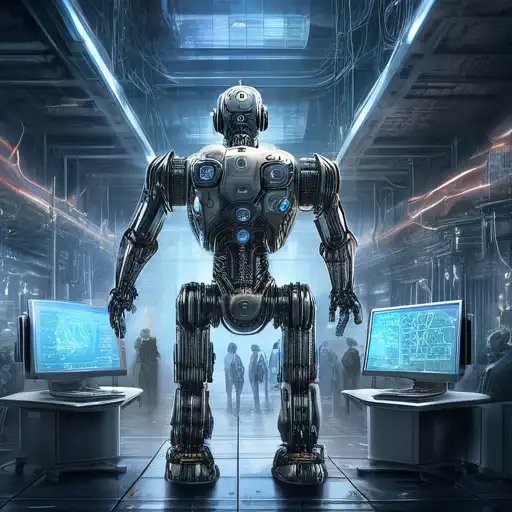Introduction to AI and Machine Learning
In the rapidly evolving world of technology, Artificial Intelligence (AI) and Machine Learning (ML) stand out as two of the most groundbreaking advancements. While often used interchangeably, these terms represent distinct concepts with unique applications and implications. This article delves into a comparative study of AI and ML, shedding light on their differences, similarities, and how they're shaping the future.
Understanding Artificial Intelligence
AI is a broad field of computer science focused on creating systems capable of performing tasks that typically require human intelligence. These tasks include problem-solving, recognizing speech, and making decisions. AI can be categorized into two types: Narrow AI, designed for specific tasks, and General AI, which possesses the ability to perform any intellectual task that a human can.
Understanding Machine Learning
Machine Learning, a subset of AI, involves the development of algorithms that allow computers to learn from and make predictions or decisions based on data. Unlike traditional programming, ML systems improve their performance as they are exposed to more data over time. ML is further divided into supervised, unsupervised, and reinforcement learning, each with its unique approach to learning from data.
Key Differences Between AI and Machine Learning
While AI and ML are closely related, several key differences set them apart:
- Scope: AI encompasses a wider range of technologies and applications, whereas ML is specifically focused on algorithms that learn from data.
- Functionality: AI aims to simulate human intelligence, while ML focuses on enabling machines to learn from data without being explicitly programmed.
- Applications: AI is used in robotics, natural language processing, and more, while ML is commonly applied in data analysis, predictive modeling, and recommendation systems.
Similarities Between AI and Machine Learning
Despite their differences, AI and ML share several similarities:
- Both aim to improve efficiency and accuracy in tasks that would otherwise require human intervention.
- They rely heavily on data to function and improve over time.
- Both fields are driving innovation across industries, from healthcare to finance.
How AI and Machine Learning Are Transforming Industries
The integration of AI and ML into various sectors has led to significant advancements. In healthcare, AI-powered diagnostics and ML algorithms for patient data analysis are improving outcomes. The finance sector benefits from AI in fraud detection and ML in algorithmic trading. Meanwhile, in retail, recommendation systems powered by ML enhance customer experiences, and AI-driven chatbots provide 24/7 customer service.
Conclusion
AI and Machine Learning are at the forefront of technological innovation, each playing a pivotal role in shaping the future. Understanding their differences and similarities is crucial for leveraging their potential to solve complex problems and create more intelligent systems. As these technologies continue to evolve, their impact across industries is expected to grow, offering endless possibilities for innovation and improvement.
